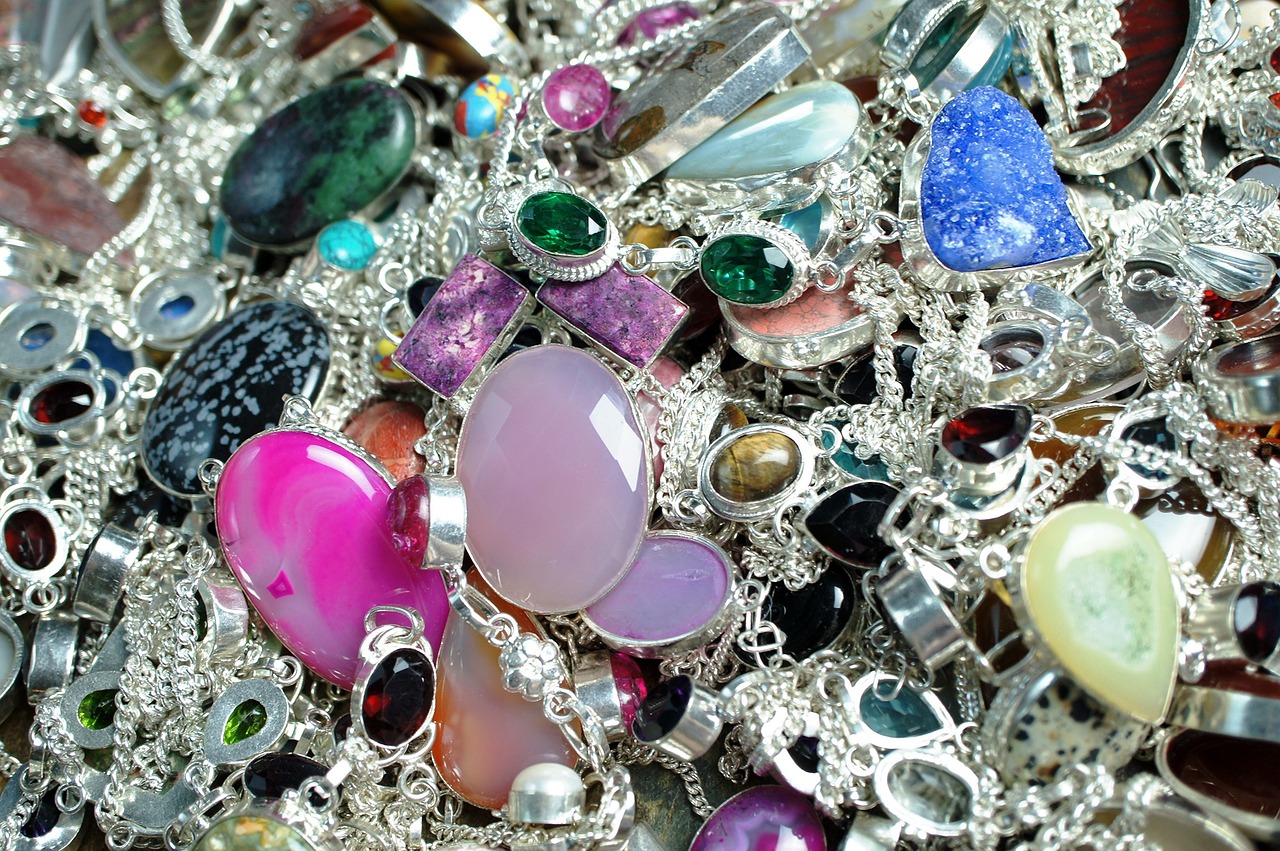Quartz is a fascinating mineral found in a variety of geological settings, and its exceptional hardness is a defining characteristic that sets it apart from many other minerals. In this comprehensive article, we will delve deep into the world of quartz, exploring its geological significance, physical properties, and the Mohs scale of hardness. Through a combination of scientific insights and real-world applications, we will unravel the secrets of quartz’s durability and the impact it has on our everyday lives.

Introduction
Quartz is a ubiquitous mineral that plays an integral role in the Earth’s geology. It is a member of the tectosilicate group, primarily composed of silicon and oxygen atoms. While its chemical composition remains relatively consistent, the variation in its crystalline structure leads to an array of stunning forms and colors. Whether in the form of transparent rock crystal, smoky quartz, or amethyst, quartz crystals are prized for their beauty and utility.
Geological Formation of Quartz
Understanding the hardness of quartz requires a glimpse into its geological origins. Quartz can be found in a variety of geological settings, from igneous, metamorphic, and sedimentary rocks to hydrothermal veins and geodes. The formation of quartz is closely tied to the Earth’s geological processes, such as magmatic crystallization, metamorphic recrystallization, and chemical precipitation from hydrothermal fluids.
- Igneous Origins: Quartz can form from molten rock during the cooling of magma. This process, known as magmatic crystallization, results in the formation of large, well-formed quartz crystals in igneous rocks like granite.
- Metamorphic Transformations: Quartz is also prevalent in metamorphic rocks, where it can result from the recrystallization of pre-existing minerals due to high temperature and pressure. Examples include quartzite, a metamorphic rock with a high quartz content, and schist.
- Sedimentary Deposition: Quartz can be deposited as grains in sedimentary rocks, often derived from the erosion and weathering of pre-existing rocks. Sandstones, composed largely of quartz grains, are a prominent example of this.
- Hydrothermal Precipitation: Quartz frequently precipitates from hydrothermal solutions, particularly in veins, geodes, and cavity fillings. These occurrences often lead to the growth of well-developed, euhedral quartz crystals.
The Mohs Scale of Hardness
The hardness of minerals is an essential property, helping geologists identify and classify different minerals. One of the most widely used methods for assessing mineral hardness is the Mohs scale, which was devised by Friedrich Mohs in 1812. This scale ranks minerals from 1 (the softest) to 10 (the hardest) based on their ability to scratch one another. Quartz, with a hardness of 7 to 7.5, holds a pivotal position in this scale.
- Mohs Scale Overview: The Mohs scale is a qualitative scale used to compare the relative hardness of minerals. It consists of ten minerals arranged in order of increasing hardness: talc (1), gypsum (2), calcite (3), fluorite (4), apatite (5), orthoclase feldspar (6), quartz (7), topaz (8), corundum (9), and diamond (10).
- Quartz’s Position: As previously mentioned, quartz ranks at number 7 on the Mohs scale. This means that it can scratch minerals with a lower rating (talc to feldspar) but will be scratched by minerals with a higher rating (topaz, corundum, and diamond).
The Science Behind Quartz Hardness
The exceptional hardness of quartz can be attributed to its atomic and crystallographic structure. Quartz is composed of a three-dimensional framework of silicon (Si) and oxygen (O) atoms, known as silicon dioxide (SiO2). This structure forms a tetrahedral network, where each silicon atom is bonded to four oxygen atoms and vice versa.
- Atomic Bonding: The strong covalent bonds between silicon and oxygen atoms in quartz make it resistant to breaking or deforming. These bonds are characterized by the sharing of electrons, resulting in a robust and stable crystal lattice.
- Crystal Structure: The hexagonal crystal structure of quartz contributes to its hardness. The orderly arrangement of atoms in the crystal lattice prevents the mineral from cleaving along distinct planes, further enhancing its durability.
- Microcrystalline Quartz: It is worth noting that not all quartz is equally hard. Microcrystalline quartz varieties, such as chalcedony and agate, consist of tiny quartz crystals, which can have lower hardness due to possible impurities and irregularities in their crystal structure.
Quartz Varieties and Their Hardness
Quartz exists in a variety of forms, each with unique characteristics and applications. Understanding the hardness of different quartz varieties can provide insights into their uses and physical properties.
- Clear Quartz (Rock Crystal): Clear quartz, with its transparent appearance, is often used in jewelry and healing practices. Its hardness of 7 makes it suitable for carving gemstones and faceting into intricate designs.
- Smoky Quartz: Smoky quartz is known for its smoky gray to brownish color, caused by natural irradiation. Its hardness is also around 7, and it is commonly used in jewelry, particularly as a lower-cost alternative to color-enhanced gems.
- Amethyst: Amethyst is the purple variety of quartz, and it also has a hardness of 7. It is a popular choice for both ornamental and gemstone purposes, and its striking color makes it highly sought after.
- Rose Quartz: Recognized for its delicate pink color, rose quartz is used in jewelry and decorative items. While it is still classified with a hardness of 7, its color often takes precedence over its hardness in its usage.
- Citrine: Citrine, the yellow to orange variety of quartz, maintains a hardness of 7. Its warm color makes it a sought-after gemstone, and it is often used in jewelry settings.
- Quartzite: As a metamorphic rock primarily composed of quartz, quartzite is notably harder and more durable than individual quartz crystals. Its hardness can range from 7 to 8.
Practical Applications of Quartz Hardness
Quartz’s hardness has real-world implications and applications that extend beyond the realm of geology and mineralogy. Let’s explore how the hardness of quartz is harnessed in various industries and everyday life.
- Construction and Building Materials: Quartz, in the form of quartzite, is utilized as a construction material due to its durability and resistance to weathering. It is employed for countertops, flooring, and cladding.
- Jewelry and Gemstone Industry: The hardness of quartz makes it an ideal candidate for jewelry and gemstone cutting. Clear quartz, amethyst, citrine, and other varieties are often faceted into stunning gemstones.
- Watchmaking: The watchmaking industry values quartz crystals for their ability to vibrate at a specific frequency when subjected to an electric current, which is utilized to keep time with remarkable precision.
- Electronics and Technology: The electronics industry relies on quartz for the production of quartz crystals used in oscillators, resonators, and filters, contributing to the functionality of electronic devices.
- Optics: Quartz’s exceptional clarity, coupled with its hardness, makes it an excellent material for lenses, prisms, and optical windows used in scientific instruments and cameras.
- Precision Instruments: The hardness of quartz ensures its stability in precision instruments like balances and scales, where it is used to maintain accuracy.
- Kitchen Countertops: Quartz countertops have gained popularity due to their aesthetic appeal, durability, and resistance to scratching and staining. The hardness of quartz ensures these countertops can withstand daily wear and tear.
Quartz in Everyday Life: A Closer Look
Quartz is not just a mineral confined to geological and industrial settings. It finds its way into our everyday lives in surprising ways, often without us realizing it. The dust in our homes, for instance, can contain quartz particles that have the potential to affect the surfaces we value.
- Household Dust: Did you know that the particles of dust you see floating in the air and settling on tables contain quartz? Quartz dust can come from a variety of sources, including soil, rocks, and construction materials. The hardness of quartz plays a significant role in its impact on our homes.
- Abrasive Cleaning: The hardness of quartz is harnessed in household cleaning products, particularly in abrasive cleaners. These cleaners use fine quartz particles to help scrub away stubborn stains and grime from surfaces.
- Countertops and Tables: Many modern countertops and tabletops are constructed with engineered quartz surfaces. These surfaces are not only aesthetically pleasing but also resistant to scratching due to the hardness of quartz.
- Flooring Materials: The durability of quartz, as seen in quartzite, is leveraged in flooring materials, where it can withstand heavy foot traffic and resist abrasion.
- Glass and Ceramics: The glass industry uses silica, derived from quartz, in the manufacturing of glass products. Quartz’s hardness contributes to the durability of glassware and glass windows.
- Abrasives and Polishing Compounds: In industrial settings, finely ground quartz is used in abrasives and polishing compounds. Its hardness helps in grinding, polishing, and finishing processes for various materials.
Quartz Hazards: Health and Environmental Concerns
While quartz’s hardness and resilience make it valuable for various applications, it also presents certain health and environmental concerns. One of the most significant issues associated with quartz is the inhalation of quartz dust, which can have detrimental effects on human health.
- Silicosis: The inhalation of respirable quartz dust can lead to a lung disease called silicosis. Silicosis is a progressive and incurable disease that results from the body’s inability to eliminate the fine quartz particles that are inhaled.
- Occupational Hazard: Workers in industries that involve cutting, grinding, or drilling quartz-containing materials are at a heightened risk of exposure to quartz dust. Occupational safety measures, such as dust control and personal protective equipment, are critical in mitigating this risk.
- Environmental Impact: The mining and processing of quartz can have environmental impacts, including habitat disruption and water pollution. Sustainable mining and processing practices are crucial to mitigate these effects.
Conclusion
In summary, the hardness of quartz, as measured on the Mohs scale, is a fundamental property that underpins its diverse applications and significance in various industries. The atomic and crystallographic structure of quartz, characterized by strong covalent bonds and a hexagonal lattice, provides it with an exceptional level of hardness, making it a highly prized and versatile mineral.
From its use in jewelry and technology to its contribution to the construction and manufacturing industries, quartz plays an essential role in our daily lives. However, it’s essential to be mindful of the potential health hazards associated with quartz dust exposure and to promote responsible and sustainable practices in the extraction and processing of this mineral.
As we reflect on the unyielding resilience of quartz, we are reminded of the intricate interplay between geology, science, industry, and daily life, where this remarkable mineral continues to leave its indelible mark. The next time you encounter quartz, whether in the glimmer of a gemstone or the surface of your countertop, you can appreciate the enduring strength and beauty of this ubiquitous mineral.





